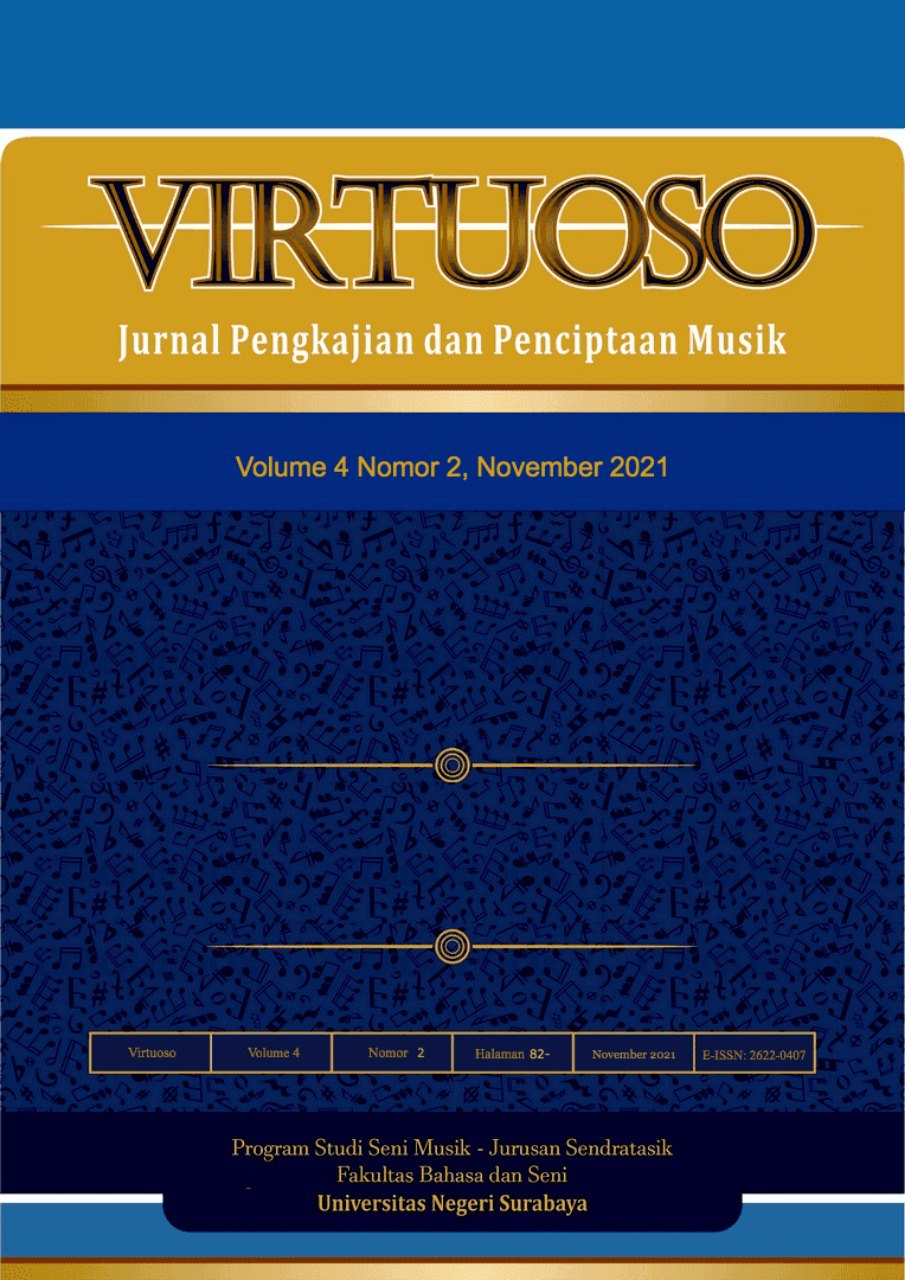Interpretasi Dinamika Dan Warna Suara Pada Suite Populaire Bresilienne No. 1 Karya Villa Lobos
Main Article Content
Abstract
This research was conducted in order to formulate the interpretation of dynamics and timbre in Suite Populaire Brésilienne No.1 by Heitor Villa-Lobos. Based on the results of the pre-study, this work is one of the classical guitar’s works that has many repetitions, so that efforts to avoid the impression of monotony need to be done. The purpose of this study is to identify the structure and musical form, determine the relationship between musical structures, and interpret them through dynamics and timbre. This study uses a qualitative research type with a musicological approach. Data collection techniques were carried out by observation, interviews, and documentation studies. The results showed that Mazurka-Choro is a suite with the ABACA rondo form in which each period has a repetition. The interpretation of dynamics and timbre is generally formulated through the tonality of each period by taking into account the tempo and rhythmic patterns. Furthermore, that a general description of the dynamics and timbre through consideration of tonality, tempo, and rhythm must be complemented by an understanding of the structure of motifs and harmony. The dynamics of the melodic structure are not only interpreted according to the direction of the melodic line, but can also be interpreted the other way around based on harmony or consideration of conceptual relations between structures or concepts that are determined in order to provide a differentiator for repetition of sentences.
Downloads
Article Details

This work is licensed under a Creative Commons Attribution-NonCommercial-ShareAlike 4.0 International License.
The copyright of the received article once accepted for publication shall be assigned to the journal as the publisher of the journal. The intended copyright includes the right to publish the article in various forms (including reprints). The journal maintains the publishing rights to the published articles.
References
Anisimova, E. N. (2015). The influence of major and minor tonality of music on an associative color-sound perception.
Creswell, J. W. (2012). Research Design: Pendekatan Kuantitatif, Kualitatif,dan Mixed (Edisi Ketiga). Pustaka Pelajar, 311.
Godlovitch, S. (2002). Musical Performance: A philosophical study.
Miles Matthew B. & Hubermann A. Michael. (1994). Qualitative Data Analysis (Second Edi). Sage Publication.
Prier, K.-E. (2017). Ilmu Bentuk Musik (keenam). Pusat Musik Liturgi.
Rukajat, A. (2018). Pendekatan Penelitian Kualitatif (Qualitative Research Approach). Deepublish.
Scruton, R. (2016). Understanding music: Philosophy and interpretation. Bloomsbury Publishing.
Sugiyono. (2013). Metode Penelitian Kuantitatif, Kualitatif, dan R&D. Alfabeta.
Traube, C. (2004). An Interdisciplinary Study of the Timbre of the Classical Guitar . (Issue October). http://www.academia.edu/914878/An_interdisciplinary_study_of_the_timbre_of_the_classical_guitar

